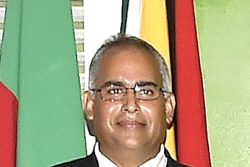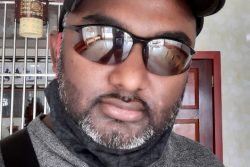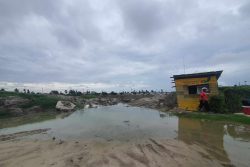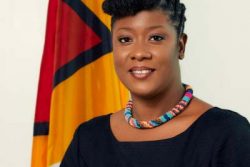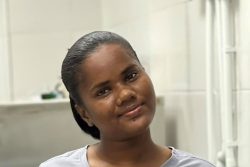
I consider myself of Guyana and the diaspora. I began this two-part essay last week defining why this is so. My art practice has materialised out of my lived experiences on this soil. Nonetheless, I have been told my work is not Guyanese. My early work engaged Indigenous creation mythologies and landscapes, and later on private yearnings were articulated utilising iconography adopted from the study of cultural artefacts of our Indigenous Peoples. Then I went on a walkabout further from home and I translated the dots of Australian Aboriginal painting into visualisations of the breath in work that was grounded in Chakra colour philosophy. Chakra pertains to Hindu philosophy. With Chakra, I remained until I stopped painting exclusively in 2010 and began a multi-disciplinary and multimedia discourse on violence against women and girls, although not limited to Guyana. How then is my work not Guyanese? When was it ever not Guyanese? But I console myself that such claims were made by those who could not conceive of a Guyana not imaged with the colours of the flag or references to our “six races”; symbols of nationhood.
Guyanese art. When I first heard the term being bandied about, I thought it meant art made within Guyana by persons of the soil or from within our diasporas that engages with some aspect of the complexity of the socio-cultural and political past, contemporary realities of the country, or offering projections and propositions of the future. Therefore, I understood Guyanese art to be emerging out of the vastness of our collective psyche. Today, I think I am wrong. I want to think I do not know what that art is but I think it is art with an evident “Amerindian” presence and I say Amerindian in the sense of a group of people with different languages, beliefs, and varying cultural practices who have been lumped together as one in our national conscience, losing their individual strands. It is art that honours and cheers political sloganeering – ‘One Guyana’, ‘Green Guyana’ – despite severe ruptures that leave some unempathetic for others and the land desecrated and polluted. It is imagery that attempts to mimetically render the flora and fauna of Guyana, especially the sites of tourist interest. In this context, indeed, my work is not Guyanese.
Almost as ubiquitous as talk about oil and gas is talk of engagement with our diasporas. And while as a visual artist I am eager to see what can come of engagement with diasporan artists, I am not hopeful. There is a severe reluctance to allow the ideas and experiences of those who have orientations that intersect without to permeate the carefully guarded boundaries of what constitutes art within. First and second-generation Guyanese artists in the diaspora come and go, resolute in the idea that they cannot make art in Guyana – their ideas have no place and their approaches cannot be supported. But their distance can be as useful as our hindsight. When looking at a painting it is advisable to step back; don’t stand so close that you are unable to see the whole picture. Distance. But distance can render Guyana an idyll rather than a space of dilapidation and daily frustrations, a space of frightful and deadly inequities, a space of insecurity.
Culture has never been a monolith, and cannot be today. In spaces like ours, where we have a multiplicity of divergent cultural strands of the past coalescing while converging with continuous migrant populations, with the transnational flow of cultural material at the click of a button, and ease of travel from and return to Guyana as home base, culture will not be a monolith. And visual artists should not be required to insulate themselves from this dynamic exchange for the sake of the nostalgic at home and abroad who cannot fathom a different relationship between art and society than one of mimesis (imitation) and prowess in visually chronicling the everyday. The artist can be the magician who resuscitates eroding memories and feeds growing nostalgia but that is not the only role. More than the skilled ‘materialiser’ of objective vision, it is our responsibility as visual artists to recognise our humanity, our intelligence – of course, feed our intellect along the way, and to say the things that need to be said and hopefully, it will be of the benefit to others…perhaps even the nation.
In the past few months, I have attempted to articulate some positions that can be a benefit to our visual art community and stymie what I see as a slow, excoriating death despite moments of glimmer and hope. Recognising that my educated friend does not know how to evaluate art – and I know he is not alone – I shared some pointers on how to do a formal reading of a work of art. I also shared a few professional pathways in as enticing a manner as I could, and what I hope will not be construed as rantings of “an academic artist” but the impassioned pleas of an artist who sees the potential of more to be done for and by artists in Guyana. Today, I add, we need:
1. Local art education that does not stifle innovation in favour of tradition with facilities that support experimentation;
2. Discourses that expand one’s conception of art and its many possibilities, inclusive of its transformative possibilities on the individual and community (including national) levels; and
3. Awareness and interaction (when possible) with our diaspora artists, many of whom are engaging with Guyana adjacent to expanded ideas.
Akima McPherson is a multimedia artist, art historian, and educator
